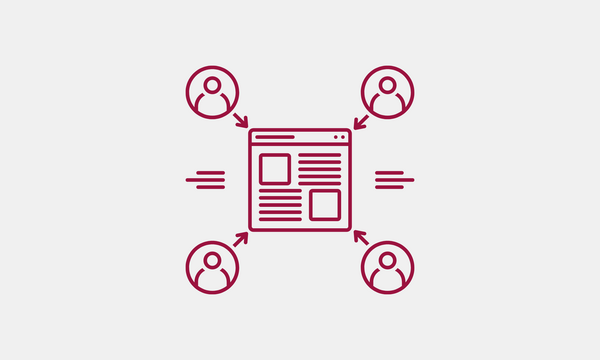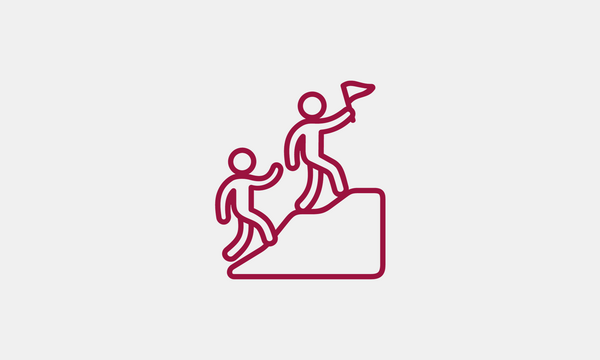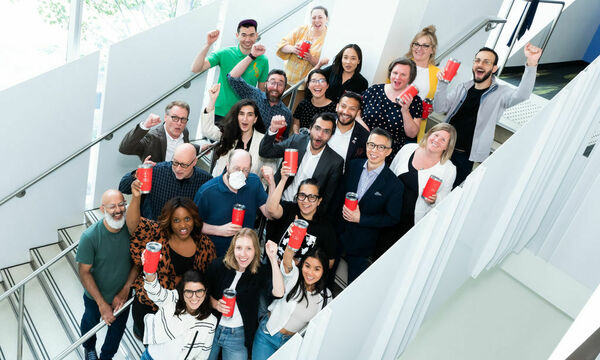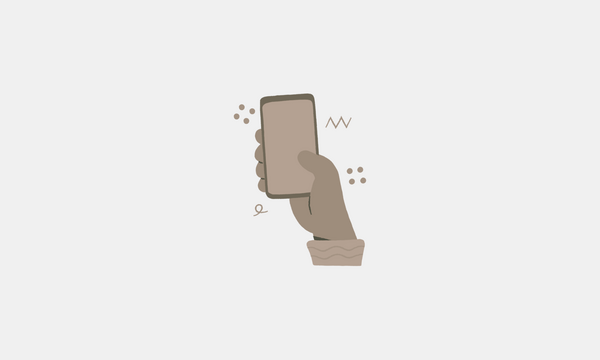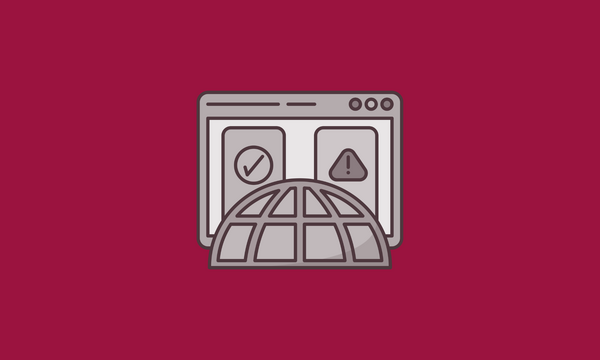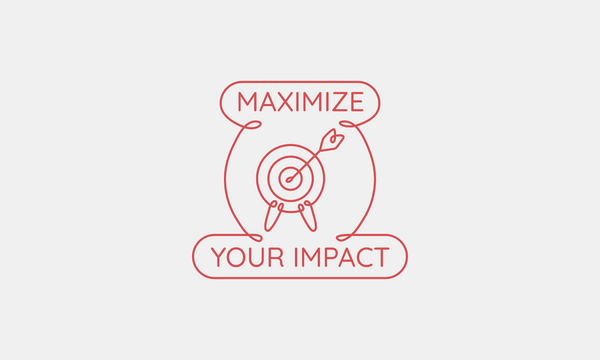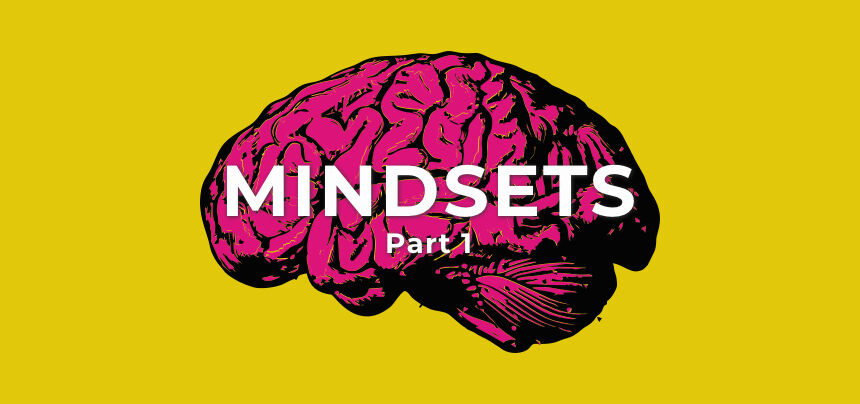
Goodbye personas! How mindsets can help you build empathy and reduce bias

Christina Lanning
March 9, 2021
In November 2020, our fellowship team (comprised of a product manager, Heshan Modaragamage; a developer, Korhan Akcura; and a UX designer, me) started work on supporting the development of a more member centric transition experience for Canadian Armed Forces members. To learn more about the fellowship and our project, please visit my colleague Heshan Modaragamage’s blog post. To learn more about how I developed the mindsets, please see part 2 of this blog: Hello mindsets! A new way to understand your users.
Every user centred product and design starts with understanding the plight of users. At the Canadian Armed Forces Transition Group (CAF TG), our users are members transitioning out of the military back to civilian life.
When I first started to think about who we were creating a product for during our time at the CAF TG, I started by creating proto-personas. Creating proto-personas is a very common step in product design: they are a hypothesis, meant to help you identify and empathize with who you’re designing a product for and why, based on initial research and assumptions; they include details such as demographics, goals and product related behaviours. However, I ran into a common problem: too many personas—colleagues at the CAF TG provided me with 22 profiles of regular and reserve CAF members that they had already identified.
The Problem with Personas
Best practice in product design is to identify a few primary and secondary users, not to try to design a product for everyone. I struggled through trying to create updated proto-personas based on our discovery to consolidate and prioritize our users, but I quickly realized the following challenges:
- There was a lot of overlap between personas related to their needs, behaviours and approaches regardless of attributes and demographic information,
- No member persona was arguably more important than the others,
- Transition is challenging for members, in part because the process is confusing, involves a lot of change and it can be extremely emotional; members attitudes and needs are in flux throughout transition, whereas personas tend to be static and unchanging,
- Finally, with personas, I felt like I was stereotyping members. For example, ill and injured members are provided more support throughout their transition, as they often have greater needs and more complex transitions; however, that does not mean that they may not be planful or self-sufficient where possible. On the other hand, some healthy members may not be planful and may require additional support.
To understand who we are building for, my team needed a tool that is more inclusive, and which allowed for overlap of needs and behaviours, as well as changing human emotions and abilities.
A New Approach: Mindsets
Eman El-Fayomi, Head of Design at the Canadian Digital Service (CDS), introduced me to mindsets when I was describing some of my challenges with personas for this project. The CDS in general has moved away from personas, in favour of mindsets for a number of reasons. And after my experience with mindsets, I can understand why.
Mindset Segmentations are broad enough to identify behavioural tendencies without prescribing personas with a name, age, gender or any other fixed demographic. Rather, the audience is split into four archetypes which are based on contrasting emotional needs and wants.- Esther Nitafan

Why mindsets are great
- They focus more on attitudes, behaviours and needs, rather than attributes, demographic details and goals. Attributes, demographics and goals tend to relate more to marketing; whereas, by understanding members’ behaviours, their needs and attitudes we are taking a human centred approach and more inclusively.
- They allow for changing mindsets and paths, as well as the products to meet them: in the case of transitioning members we know that some members may be very planful when they start their transition; however, transitioning to civilian life is a big change to their identify, lifestyle and community, which can lead to feelings of being overwhelmed, and to members becoming more reactionary. By understanding the various mindsets and related behaviours, needs and attitudes, products can be designed to provide more flexibility in how tools are used by both the members and administrators as they support members to better meet the members’ needs.
- They reduce stereotyping and bias: while it is important not to disregard an individual’s circumstances, mindsets really helped me to focus on what an individual was doing, thinking and feeling as a result of their attitudes, behaviours and needs, rather than attributing them simply as a result of their demographics or circumstances.
- They helped me empathize more: I was pleasantly surprised as I worked through the mindsets and then the experience maps for each mindset to find that I was better able to empathize with each mindset than I had been able to in the past with personas. This heightened empathy led to new insights and hypotheses related to members' mental and emotional journeys throughout their transition experience.
Concluding thoughts
As mindsets are not yet widely adopted or understood, I recommend taking the time with partners to explain how mindsets are created, how and why mindsets can be used and their benefits over personas for particular projects. By taking this approach, it helped my team to be successful in gaining buy-in and support for their adoption at the CAF TG.
Mindsets may not work for every project; however, they are a tool that I know I will reach for again and again in the future to better understand and empathize with users for which I am designing.
To learn more about how I developed the mindsets for CAF TG, see part 2 of this blog: Hello mindsets! A new way to understand your users.
A big thank you to Eman El-Fayomi! Eman first introduced me to mindsets and provided me with the initial template used by the Canadian Digital Service, as well as the inspiration and guidance to help me get started.
You're here to help residents, and we're here to help you. Interested in how to bring digital tools and skills into your government department? No matter where you are on your digital government journey, learn more about how Code for Canada can support your work.
Resources
- Design your products around mindsets, not just user personas by Esther Nitafan https://medium.com/swlh/design-your-products-around-mindsets-not-just-user-personas-68b1b6f35f85
- Mindset over matter: a new design trick for your toolbox, part one by Chiara Lino and Giulia Bazoli https://medium.designit.com/mindset-over-matter-a-new-design-trick-for-your-toolbox-part-one-91bc5f82360f
- Mindset over matter: a new design trick for your toolbox, part two by Chiara Lino and Giulia Bazoli https://medium.designit.com/mindset-over-matter-a-new-design-trick-for-your-toolbox-part-two-f56bd248319a
- Mindset over matter: a new design trick for your toolbox, part three by Chiara Lino and Giulia Bazoli https://medium.designit.com/mindset-over-matter-a-new-design-trick-for-your-toolbox-part-three-56cf15789349
- Mindset Segmentation https://mindsets.fjordnet.com/
- Stop Obsessing Over User Personas by Jeremiah Lam https://jjeremiahlam.medium.com/stop-obsessing-over-user-personas-d513e267eb44
- Understanding and designing for changing mindsets during a global pandemic by Jeana Frost and Brian Hendrick https://digital.canada.ca/2020/12/02/understanding-and-designing-for-changing-mindsets-during-a-global-pandemic/
End of articles list


